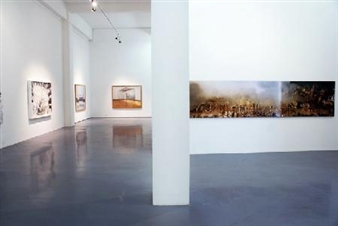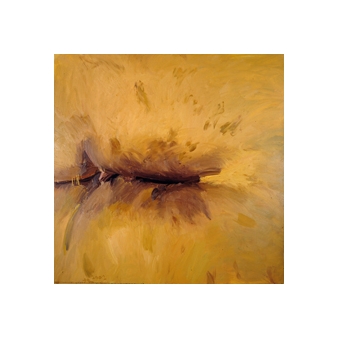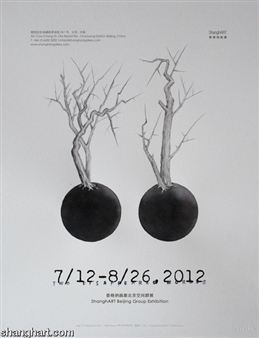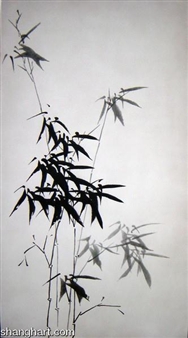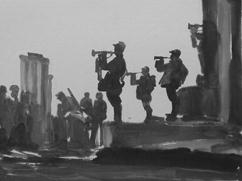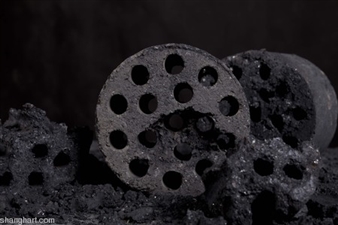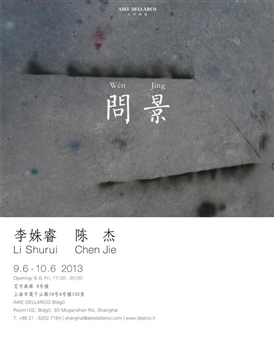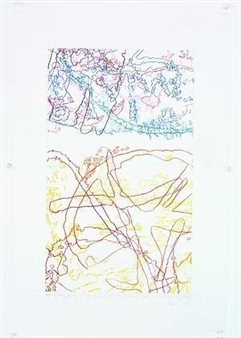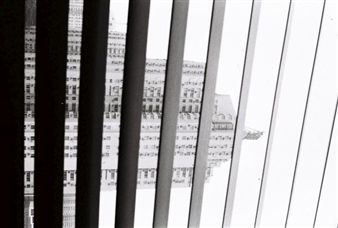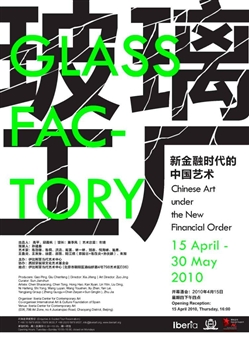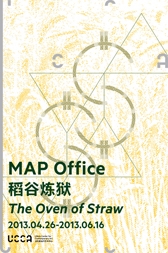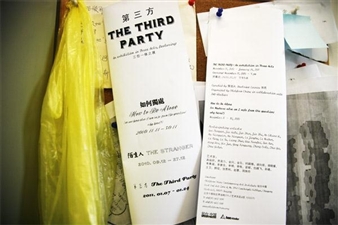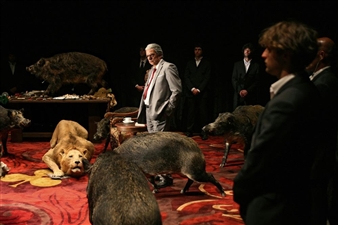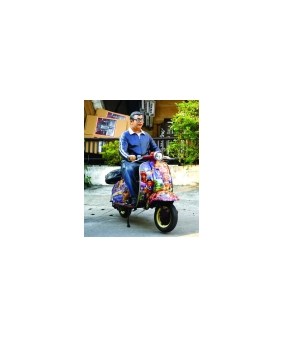INK AND THE BODY
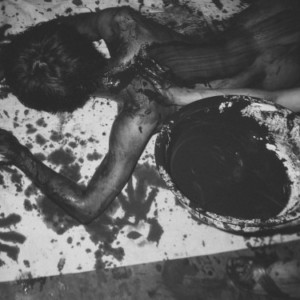
Ink Studio - Beijing, Beijing, Beijing, 09/21/2014
ABOUT
Ink Studio’s premier group show, Ink and the Body, launches a planned series of three exhibitions examining ink painting in terms of the
relationship between the subject and both the artist and viewer, from a phenomenological perspective. The series consists of Ink and the
Body, Ink and the Mind, and Ink and the Environment.
Ink and the Body explores the multivalent interactions between the human body and Chinese ink: of necessity, the body is the vehicle
through which art is both created and perceived. Ideally, the experiencing of an ink painting that was created by an artist in full, instinctive
control of the brush (or “in the zone”) can mirror the mental state involved in its creation. Thus, Ink and the Body is the logical entry point
for an extended examination of the profound issues central to Chinese ink painting.
Much of contemporary Chinese ink painting relates to the body not only as the vehicle of creation, but also in more direct terms. At its
most basic, this takes the form of direct impressions of the body, for example in Wang Peng’s ‘84s Performance—the first instance of
nude performance art in China—and Zhang Yu’s ongoing series of fingerprint paintings, a fingerprint being an age-old identifying marker.
The body becomes the medium of the exquisite and challenging performances by Dai Guangyu, in which ink is metaphorically conceived
as nourishment and ritual fluid for the individual’s existence.
Tao Aimin focuses on the body’s action on the world, capturing the imprint of repetitive activity in her rubbings of old wooden
washboards. Both the senior sculptor, Qian Shaowu, and renowned painter Li Jin paint images of the body, the latter humorous musings
on the place of an individual in contemporary Chinese society, and the former based on European training in three-dimensional figural
modeling, translated into ink painting. Chen Haiyan’s vivid images arise from her dreams, and reflect an understanding of color inspired
by both the Expressionists and by mid-century master Zao Wou-Ki’s encouragement of her personal color sense.
Other artists focus on aspects of the body as metaphor; for example, Zhang Chunhong’s finely detailed renderings of her and her sisters’
long hair make statements concerning relationships and the place of the individual in the world. Huang Zhiyang captures the sense of
universal energy manifest in the body, and Zheng Chongbin considers the psyche as expressed via abstracted human forms. Yang
Jiechang further abstracts the body in his starkly expressive Three Men Walking, based on a statement by Confucius. Finally, master
calligrapher Wang Dongling reflects on the relationship between the body, the act of wielding the brush, and the different styles of
calligraphy developed over the millennia.
The three exhibitions, Ink and the Body, Ink and the Mind, and Ink and the Environment, will take place over the next two years.
Together, they will present a comprehensive assessment of the philosophical reach of Chinese ink painting. Each will be accompanied by
a brochure, with a book to be produced at the close of the third. Ink Studio’s series of books on ink painting all are researched in depth
and copiously illustrated. They are distributed by the major U.S. distributor of books on contemporary art, D.A.P.
Image above:
Huang Zhiyang, Lover's Library-Our First Photo Together, 2014
Ink on silk, 220 x 140 cm
For More Information
Ink Studio’s premier group show, Ink and the Body, launches a planned series of three exhibitions examining ink painting in terms of the
relationship between the subject and both the artist and viewer, from a phenomenological perspective. The series consists of Ink and the
Body, Ink and the Mind, and Ink and the Environment.
Ink and the Body explores the multivalent interactions between the human body and Chinese ink: of necessity, the body is the vehicle
through which art is both created and perceived. Ideally, the experiencing of an ink painting that was created by an artist in full, instinctive
control of the brush (or “in the zone”) can mirror the mental state involved in its creation. Thus, Ink and the Body is the logical entry point
for an extended examination of the profound issues central to Chinese ink painting.
Much of contemporary Chinese ink painting relates to the body not only as the vehicle of creation, but also in more direct terms. At its
most basic, this takes the form of direct impressions of the body, for example in Wang Peng’s ‘84s Performance—the first instance of
nude performance art in China—and Zhang Yu’s ongoing series of fingerprint paintings, a fingerprint being an age-old identifying marker.
The body becomes the medium of the exquisite and challenging performances by Dai Guangyu, in which ink is metaphorically conceived
as nourishment and ritual fluid for the individual’s existence.
Tao Aimin focuses on the body’s action on the world, capturing the imprint of repetitive activity in her rubbings of old wooden
washboards. Both the senior sculptor, Qian Shaowu, and renowned painter Li Jin paint images of the body, the latter humorous musings
on the place of an individual in contemporary Chinese society, and the former based on European training in three-dimensional figural
modeling, translated into ink painting. Chen Haiyan’s vivid images arise from her dreams, and reflect an understanding of color inspired
by both the Expressionists and by mid-century master Zao Wou-Ki’s encouragement of her personal color sense.
Other artists focus on aspects of the body as metaphor; for example, Zhang Chunhong’s finely detailed renderings of her and her sisters’
long hair make statements concerning relationships and the place of the individual in the world. Huang Zhiyang captures the sense of
universal energy manifest in the body, and Zheng Chongbin considers the psyche as expressed via abstracted human forms. Yang
Jiechang further abstracts the body in his starkly expressive Three Men Walking, based on a statement by Confucius. Finally, master
calligrapher Wang Dongling reflects on the relationship between the body, the act of wielding the brush, and the different styles of
calligraphy developed over the millennia.
The three exhibitions, Ink and the Body, Ink and the Mind, and Ink and the Environment, will take place over the next two years.
Together, they will present a comprehensive assessment of the philosophical reach of Chinese ink painting. Each will be accompanied by
a brochure, with a book to be produced at the close of the third. Ink Studio’s series of books on ink painting all are researched in depth
and copiously illustrated. They are distributed by the major U.S. distributor of books on contemporary art, D.A.P.
Image above:
Huang Zhiyang, Lover's Library-Our First Photo Together, 2014
Ink on silk, 220 x 140 cm
For More Information